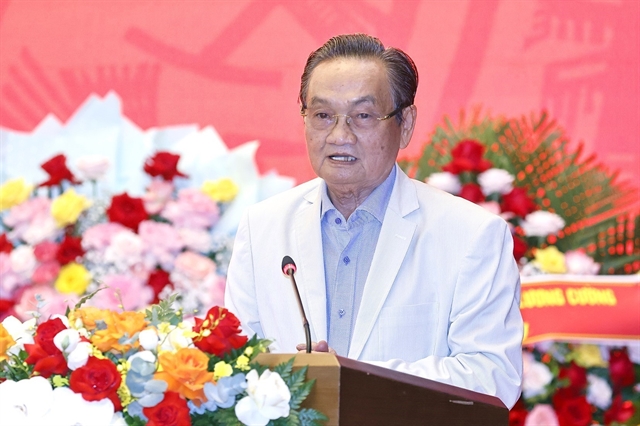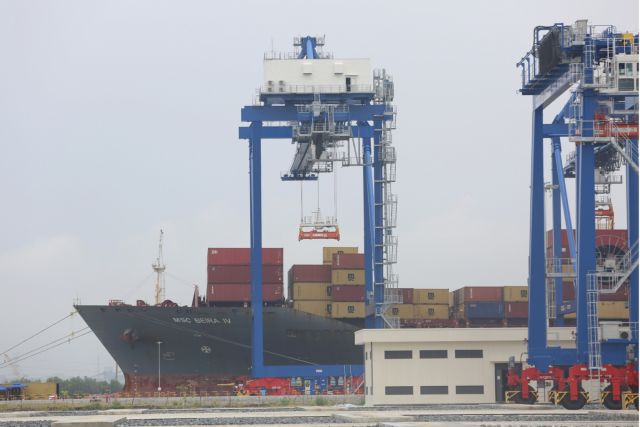Việt Nam News Agency speaks with Dr. Trần Du Lịch, a member of the Prime Minister's Economic Advisory Group, on Đồng Nai’s growth drivers in the next five years after the provincial merger.

After the reorganisation of provinces and cities across the country and it taking over Bình Phước, the new Đồng Nai Province has a population of over 4.4 million and the fourth largest economy in the country.
It enjoys a wide range of advantages that will aid economic development, including being home to flourishing tech and logistics industries and advanced science and technology.
Việt Nam News Agency speaks with Dr. Trần Du Lịch, a former rector of the HCM City Institute of Economics and a member of the Prime Minister's Economic Advisory Group, on Đồng Nai’s growth drivers in the next five years.
Following its expansion, how do you see Đồng Nai’s development opportunities?
Đồng Nai is one of the “Southeastern economic quadrilateral” localities, which also include HCM City and the former provinces of Bình Dương and Bà Rịa – Vũng Tàu.
The province has always have great development potential, but has not fully taken advantage of it. Its growth rate has been rather slow, and there have been plenty of bottlenecks hindering development.
The province is entering a new era of growth with its new land area of over 12,700km2 after the merger.
Đồng Nai has to focus on a double-digit annual economic growth target, and use that as a basis to develop policies and capital mobilisation solutions and public management capabilities.
It also needs to fully exploit its geographical and economic potentials as part of the “Southeastern economic quadrilateral”.
According to Đồng Nai statistics, its economy is expected to grow to US$26.6 billion in 2025, and it targets $53 billion by 2030 and $106 billion by 2045.

To reach these targets, what are the growth drivers Đồng Nai should focus on?
Đồng Nai will focus on five pillars of growth.
The first is the processing and manufacturing industry, with over 20,000ha of land zoned for industrial development and access to the southeastern industrial – service – urban corridor.
It has the potential to achieve breakthroughs in renewable energy and green industry, green transformation and digital transformation.
The province is working towards a free trade zone linked with its Phước An Sea Port and the upcoming Long Thành International Airport so that it can ensconce itself deeper into the global supply chain.
It targets industrial added value growth of around 14 per cent a year in 2026 – 30.
The second pillar is port and logistics services, including ports along the southeastern industrial – service – urban corridor.
Đồng Nai will form logistics hubs from the Hoa Lư Border Gate to Long Thành Airport and Phước An Port, as well as other ports in southeastern Việt Nam.
The third pillar is hi-tech and clean agriculture since the province grows industrial crops and has large-scale animal farming.
Fourthly, the province can utilise its fast urbanisation rate to develop the industrial real estate market. Urbanisation, tourism real estate and services infrastructure play an important role in economic growth and the development of other sectors.
The final pillar is tourism based on the province’s eco-tourism attractions, cultural and historical relics and leveraging the upcoming Long Thành International Airport.
Đồng Nai’s tourism development can also be linked with HCM City and Đắk Lắk Province.
What kind of policies are needed to remove developmental bottlenecks?
As mentioned above, Đồng Nai needs specialised policies for enhancing state management and capital mobilisation.
For example, there is Resolution 98/2023/QH15 with special mechanisms and policies to stimulate the development of HCM City and fostering innovation and sustainability, which now has been expanded to cover [the erstwhile] Bình Dương and Bà Rịa – Vũng Tàu provinces. Đồng Nai, as one of the ‘Southeastern economic quadrilateral,’ should also have something like that.
In fact, future trial programmes for policies and mechanisms for other localities should be applied for Đồng Nai too.
Đồng Nai is working on a free trade zone linked with Long Thành Airport, which means that special policies and mechanisms for it (but linked with the general development of the province) is needed. VNS





